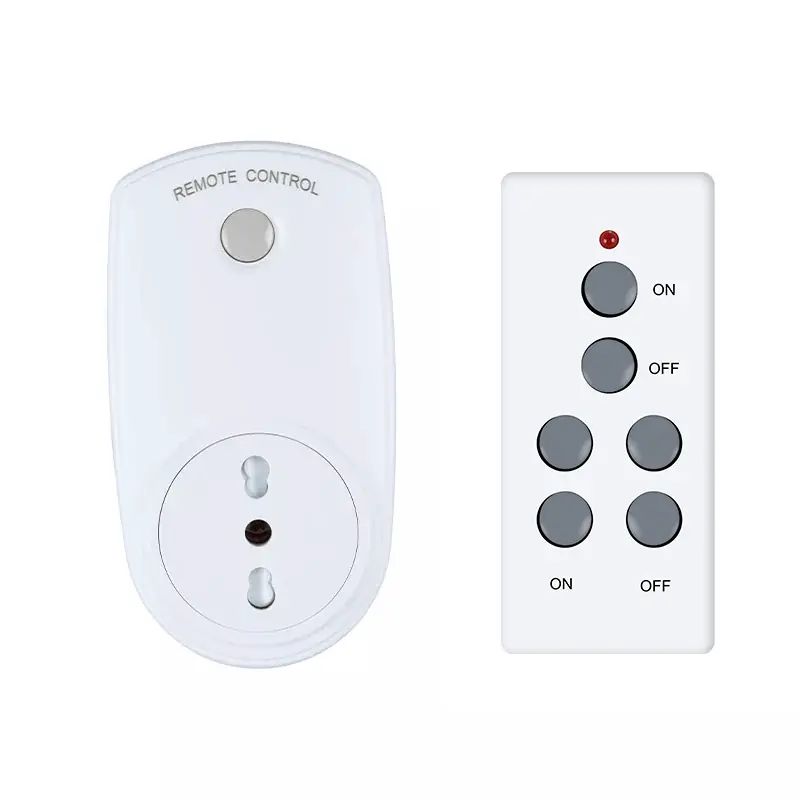What Are Common Faults in Remote Control Sockets And How to Repair Them?
2025-11-17
Remote control sockets have become an essential part of modern homes and offices, offering convenience and energy efficiency. At Ningbo Aiplan Lighting Technology Co., Ltd., we have seen increasing demand for high-quality Remote Control Socket solutions, and our factory specializes in producing reliable and durable models designed to meet diverse customer needs.
Understanding Remote Control Socket Faults
Remote control sockets can experience a variety of issues over time. Common faults may include unresponsiveness, intermittent connection, or complete failure to power devices. Understanding the root cause is crucial for effective repair and maintenance. Our engineers at Ningbo Aiplan Lighting Technology Co., Ltd. recommend a systematic approach to troubleshooting these devices.
Common Faults and Their Causes
Several factors contribute to faults in Remote Control Sockets. These include:
- Battery depletion in the remote control unit
- Interference from other wireless devices
- Wear and tear of internal components
- Overloading beyond the socket's rated capacity
- Poor connection or loose wiring
Our factory ensures all Remote Control Socket products undergo rigorous quality testing to minimize these issues, but understanding these faults helps our customers maintain optimal performance.
Product Parameters for Reliable Performance
Before diving into repair techniques, it is essential to understand the key specifications of our Remote Control Socket products. The table below outlines the primary parameters that define the performance and durability of our devices:
| Model | RC-S01 | RC-S02 | RC-S03 |
| Input Voltage | AC 100-240V | AC 100-240V | AC 100-240V |
| Max Load | 10A | 16A | 10A |
| Frequency | 433.92 MHz | 315 MHz | 433.92 MHz |
| Operating Range | 30 meters | 25 meters | 30 meters |
| Material | Flame-retardant ABS | Flame-retardant ABS | Flame-retardant ABS |
| Warranty | 2 years | 2 years | 2 years |
Our Remote Control Socket products are carefully designed in our factory to ensure safety, efficiency, and a long service life, making them ideal for residential and commercial use.
Step-by-Step Repair Guide
When dealing with common faults, our team recommends the following repair procedures:
- Check the remote control batteries: Replace old batteries with new ones to restore signal strength.
- Inspect for interference: Ensure no other wireless devices are causing signal disruption.
- Examine wiring and connections: Tighten loose connections and check for damaged wires.
- Reset the socket: Most Remote Control Sockets include a reset button that restores factory settings.
- Test load limits: Avoid plugging devices that exceed the maximum rated load of the socket.
- Replace damaged components: If internal circuits or relays are worn out, replace them with original parts from our factory to maintain safety and reliability.
Following these steps can significantly extend the life of our Remote Control Socket products and improve operational reliability.
Preventive Maintenance Tips
Our experience at Ningbo Aiplan Lighting Technology Co., Ltd. indicates that preventive maintenance reduces the risk of faults. Key tips include:
- Regularly clean the socket to prevent dust buildup.
- Avoid overloading devices.
- Keep the remote control and socket in a dry environment.
- Periodically test functionality to detect minor issues early.
- Store spare batteries for the remote control in our recommended specifications.
By following these maintenance guidelines, our customers can ensure their Remote Control Socket units remain functional and safe for years.
What Are Common Faults in Remote Control Sockets And How to Repair Them? - FAQ
Q1: Why is my Remote Control Socket not responding to the remote?
A1: First, check the batteries in the remote and replace them if they are low. Ensure that the socket is within the operating range and there are no obstacles blocking the signal. Our factory designs the sockets to maintain a stable connection, but interference from other devices can occasionally disrupt communication. If the socket still does not respond, try resetting it to factory settings as per the product manual.
Q2: What should I do if the socket powers devices intermittently?
A2: Intermittent operation is often caused by loose wiring or worn internal components. Inspect all connections and ensure they are secure. Overloading the socket can also cause interruptions, so verify that the devices plugged in do not exceed the rated load. Replacing worn relays or circuit components with genuine parts from our factory typically resolves this issue.
Q3: How can I prevent common faults in my Remote Control Socket?
A3: Preventive measures include keeping the socket clean, avoiding overloading, storing the remote in a dry environment, and periodically checking functionality. Our Remote Control Socket products are built with durable materials such as flame-retardant ABS and undergo strict quality tests at Ningbo Aiplan Lighting Technology Co., Ltd. to minimize faults, but regular maintenance ensures optimal performance.
Conclusion
Remote Control Sockets are highly convenient devices, but they are not immune to faults. Our experience at Ningbo Aiplan Lighting Technology Co., Ltd. demonstrates that understanding common issues, performing proper repairs, and conducting regular maintenance are essential for long-term reliability. By using our Remote Control Socket products and following the outlined repair and preventive measures, our customers can enjoy a safe, efficient, and trouble-free experience in controlling their home or office electronics.
We at Ningbo Aiplan Lighting Technology Co., Ltd. remain committed to providing high-quality products from our factory, ensuring that every Remote Control Socket meets stringent performance and safety standards. Investing in proper care and repair techniques guarantees lasting satisfaction and optimal functionality for all users.



